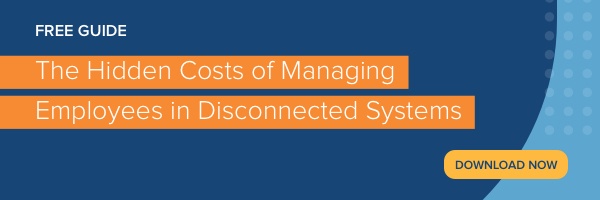%20With%20Examples.jpg?width=1200&name=Fuse%20-%20How%20to%20Write%20a%20Performance%20Development%20Plan%20(PDP)%20With%20Examples.jpg)
Helping employees reach their full potential and career goals is essential to support a positive employee experience. That’s why a performance development plan (PDP) is such a valuable tool in your talent management toolkit, as it elevates employee performance and lays out plans for individual growth.
This post will teach you how to write a performance development plan and show what PDPs look like in practice.
What Is a Performance Development Plan?
A performance development plan is a tool for measuring and improving employee performance. It pulls together an employee’s performance, capabilities, and career goals into a plan for learning and developing over time.
With the help of a PDP, you can create a cycle of regular communication with employees about the steps necessary to boost performance, build skills and knowledge, and make career aspirations a reality.
Benefits of a Performance Development Plan
Having a plan and process for leveling up employee contributions and capabilities is critical for any organization. After all, employees who build their skills can contribute more to the organization’s overarching goals.
Employee development is also important to employees. In fact, a LinkedIn study found that 94 percent of employees said that they would stay at a company longer if it invested in their career development.
In working with each employee to develop a PDP that aligns with their strengths, weaknesses, and career goals, you can realize the following benefits:
- More proactivity in the approach to employee growth and development
- Greater predictability of employee career progression
- Higher employee accountability and commitment to development
- More fruitful discussions about current performance and future potential
Critical Elements of a Performance Development Plan
To be effective, a performance development plan should have a relatively equal focus on employee performance, potential, and opportunities for improvement. That way, you can align employee behaviors with desired outcomes.
Each PDP should also plainly state what employees need to do to support their development and the training the organization will provide to help them. To be sure you cover these critical areas, incorporate the following elements into each PDP:
- Performance metrics and results: Pull together information about employee performance, such as quarterly results, 360-degree feedback, and performance review scores and comments.
- Competencies and expertise: List the employee’s skills, traits, and capabilities, as well as any expertise they have with specific processes, technologies, and tools.
- Career aspirations: Describe employee short, medium, and long-term career goals, including their desired next role, interest in leadership, and openness to a cross-functional move or relocation.
- Areas for development: Summarize areas to address with training, coaching, and other support. Possibilities include soft skills, technical skills, or experiences with specific projects or in particular functional areas.
- Action plan for development milestones: Describe the specific training, networking, rotational opportunities, task forces, mentorships, and responsibilities that will improve employee performance and help them reach their goals.
- Timeline for follow-up: Set a realistic schedule for reviewing the PDP throughout the year.
Two Real-World Performance Development Plan Examples
Writing a performance development plan for the first time may seem daunting. However, if you include all the necessary elements and customize the plan to each employee, you will be successful.
Here are two examples to give you a better idea of how a PDP could look in your organization:
For an HR professional, a PDP might look like this:
|
Employee Performance |
Performance currently exceeds expectations. Employee survey results point to a successful onboarding and employee training program. |
|
Employee Competencies |
Strong influencing and communication skills. Highly competent in understanding applicable labor laws. |
|
Employee Aspirations |
Short-term goal is a promotion to the division HR head. Long-term goal is to become CHRO for the Americas. Also want to consider a lateral move in a non-HR business area. |
|
Employee Development Areas |
Improve union negotiation skills, expand leadership capability to become a leader of teams. |
|
Action Plan |
Participate in mentorship program, join cross-functional task force to revamp company intranet, manage two new intern teams, shadow head of labor relations for next round of union negotiations. |
|
Timeline |
Review quarterly in March, June, September, and December |
For a payroll manager, the PDP might look like this:
|
Employee Performance |
Performance meets expectations. 360-results suggest some improvement needed in communicating with employees on payroll queries. |
|
Employee Competencies |
Strong computing and analysis skills. Recently received nationally recognized payroll certification. |
|
Employee Aspirations |
Short-term goal is a level promotion from manager to director. Long-term goal is a potential transition into an HR business partner role. |
|
Employee Development Areas |
Improve communication and influencing skills. |
|
Action Plan |
Attend personal leadership and communication training, pursue HR certification, participate in the mentorship program. |
|
Timeline |
Revisit PDP in 60 days to review training and certification program start dates. Review quarterly thereafter. |
Deliver High-Quality Performance Development Plans
To write and deliver an effective performance development plan, you need critical employee information, including past performance, career history, and evidence of training and certifications. Easy access to this information is possible when you store it all in an integrated HR system.
Instead of pulling data from multiple disconnected systems that may have conflicting information, you can easily run consolidated reports from an integrated system that keeps all your critical people data in one place. For more insights, read our guide, The Hidden Costs of Managing Employees in Disconnected Systems.


